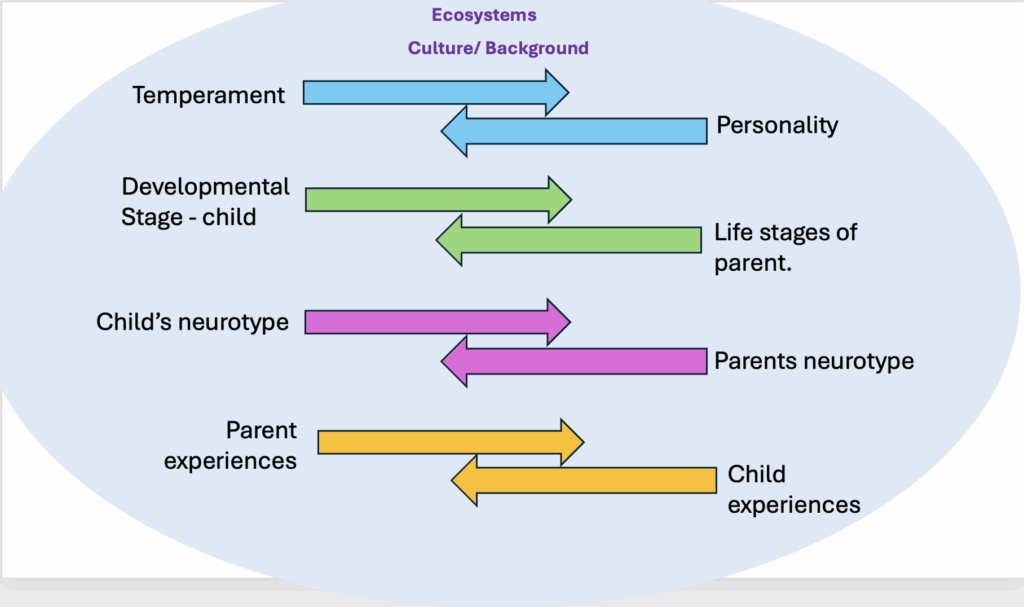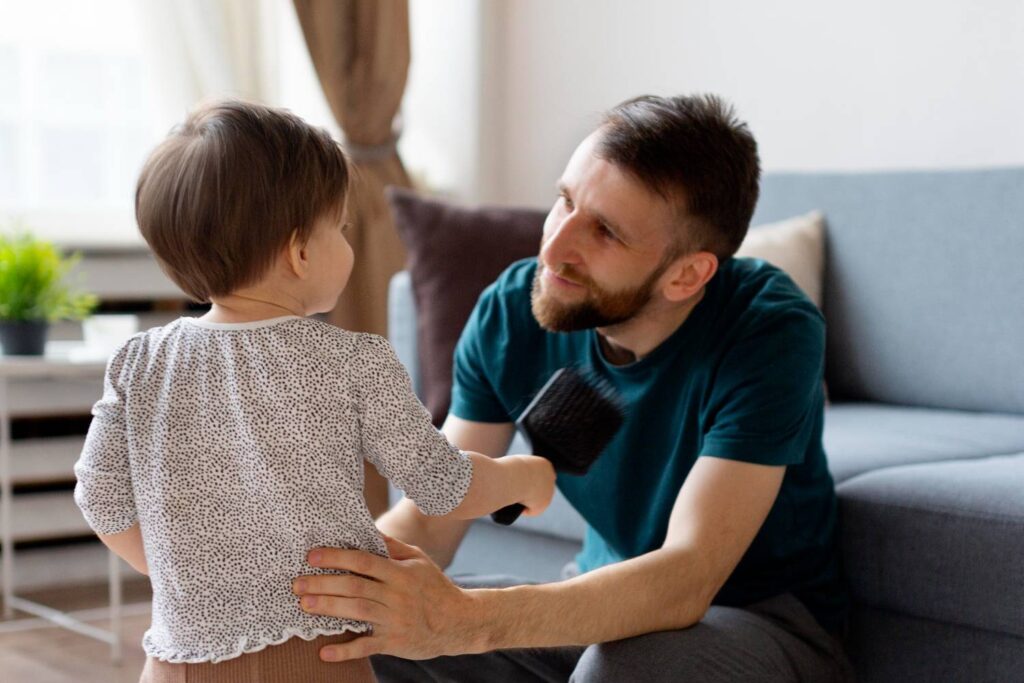Parenting is often seen as on directional: the adult teaches, and the child learns. But this is only half the story. The most powerful and beautiful part of raising children is how they change us in return. By understanding that this a two-way street, we can build deeper connections, reduce conflict, and grow together as a family.
Temperament and Personality
Every child is born with their own unique style. Some are bold and energetic; others are thoughtful and calm. This is their temperament—their natural way of approaching the world. It’s not a choice or a reflection of your parenting. Your personality and your child’s can either clash or harmonise.
How awareness helps: Instead of trying to change our child’s core nature, we can learn from it. That intense child can teach us about passion and perseverance. That flexible child can show us the joy of spontaneity. You learn to appreciate differences, which makes your whole family more resilient.
Child’s Developmental Stage vs Life Stages of Parent
Your child is focused on the tasks of their age: a toddler on independence, a teenager on identity. At the exact same time, you are navigating your own life stage: building a career, managing a home, or caring for your own ageing parents.
How awareness helps: When we see our child’s behaviour as a normal part of their growth, it’s easier not to take it personally. We can support their need to become independent while also finding smart solutions to make daily life work. We learn to balance their developmental needs with our own real-world demands.
Child’s Neurotype vs Parent’s
Neurotype refers to how our brains are wired. An autistic child’s brain processes sensory information differently. A child with ADHD has a brain built for curiosity and movement. Your brain might work in a more typical way, which can make your child’s experience hard to understand at first. What looks like misbehaviour might be a reaction to an overwhelming sound or a brain that needs to move to think. A parent might feel frustrated because their child doesn’t seem to be listening.
How awareness helps: We learn to become a detective. We stop asking “How do I stop this behaviour?” and start asking “What is my child trying to tell me?”. We learn to see the world through their eyes and adapt our home to support their needs. In return, our child feels safe, understood, and accepted for who they are.
Environment
Our environment is the ecosystem oour family lives in. This includes noise levels, daily routines, busy schedules, and overall family stress. This environment affects everyone. For example, A stressful, rushed morning routine puts everyone on edge. A parent’s bad day at work can make them short-tempered at home, which then makes the children anxious or act out, which then stresses the parent even more.
How awareness helps: We realise that sometimes; to change a behaviour, we need to change the environment, not the child. Creating calm, predictable routines and reducing clutter can soothe everyone’s nerves. By managing our own stress and creating a peaceful home, we can directly help our child feel calm and secure too.
Parent vs Child’s Experiences
We parent through the lens of our own childhood. Our child experiences our parenting through the lens of their life today. Our triggers are often from our past; their reactions are about their present.
How awareness helps: We can learn to pause. When your child’s behaviour triggers a big reaction in you, you can ask yourself: “Is this about my child, or is this about my past?”. Doing this inner work helps you break old cycles. We can respond to our child’s present need with love, instead of reacting from our past pain. This heals us both.

Growing Together
Parenting with this awareness is a journey. It’s about observing, learning, and adapting—for both of you. When you see your relationship as a bi-directional, you stop being just the director and become a partner in growth. You raise your children, and they, in their own wonderful way, raise you right back.






